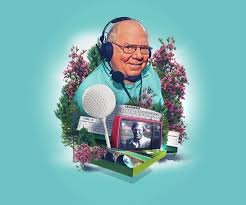7 Smart Reasons to Use Vinegar in Laundry
Using inexpensive distilled white vinegar in the laundry is smart because it will whiten, brighten, reduce odor and soften clothes without harsh chemicals.
IT’S CHEAP
Plain distilled white 5% vinegar runs around 3.5 cents per ounce in the typical supermarket when purchased by the gallon, and even cheaper when you can find it at the dollar store.
Name-brand liquid fabric softeners come in at about 10 cents per ounce — nearly three times the cost. As an alternative to liquid softeners, dryer sheets are a cheaper way to ruin your clothes and linens. On average, they’re about 5 cents per sheet.
IT’S COLORLESS
When buying vinegar to use in the laundry, choose distilled white vinegar with 5% acidity. It contains no synthetic color and no natural plant dyes that can stain clothes.
IT SOFTENS
Plain white distilled vinegar with 5% acidity is a natural fabric softener. The acid helps remove detergent and soil that is left clinging to fabric fibers, which is what allows clothes and linens to come out feeling soft and clean.
Commercial softeners work just the opposite. They are designed to coat fibers, leaving behind their scented residue, which can build up over time, rendering those items nonabsorbent, dingy gray and anything but soft.
Adding 1/2 cup of white vinegar to the final rinse, on the other hand, will soften fabrics and leave no residue at all. Pour it into the washer reservoir marked for laundry softener. A light scent can be added, if you want, with a few drops of lavender oil. However, once dry, your laundry will not smell like vinegar.
IT IS SAFE TO USE
Distilled white vinegar is safe to use in both standard and high-efficiency washers. At 5% acidity, it is 95% water, which makes it mildly acidic.
Once added to the washer, food-grade vinegar becomes even more diluted when mixed with gallons of rinse water in the typical machine.
Vinegar in the laundry is not only safe in septic tanks but is also beneficial to that type of system and to the environment as well.
IT WHITENS AND BRIGHTENS
The acetic acid in distilled white vinegar will not harm washable fabrics because it is so mild but also strong enough to dissolve the alkalis left by soap and detergent.
Adding 1/2 cup of vinegar to the final rinse will result in brighter, clearer colors. Add the distilled white vinegar to the fabric softener dispenser, or add it manually at the beginning of the rinse cycle, if your washer gives you that option.
IT REDUCES ODOR
Wet towels left sitting in a hamper or forgotten in the washer can produce a sour, moldy smell. To get rid of that problem and to get those towels smelling nice and fresh, do this:
Fill the washer with hot water. Add two cups of distilled white vinegar and run a complete wash cycle with no detergent. Run a second complete cycle with detergent added.
This works well for minor situations and small loads. For more serious situations, you’ll want to use this more aggressive treatment.
IT RELEASES LINT AND PET HAIR
Just 1/2 cup of white distilled vinegar in the rinse cycle will help prevent lint and pet hair from clinging to clothes. The vinegar will help the fabric fibers relax and “release” the hair. For the same reason, it helps get rid of the excessive lint if you accidentally wash something dark with something that produces lint, such as towels.
Copyright 2022 Creators.com



